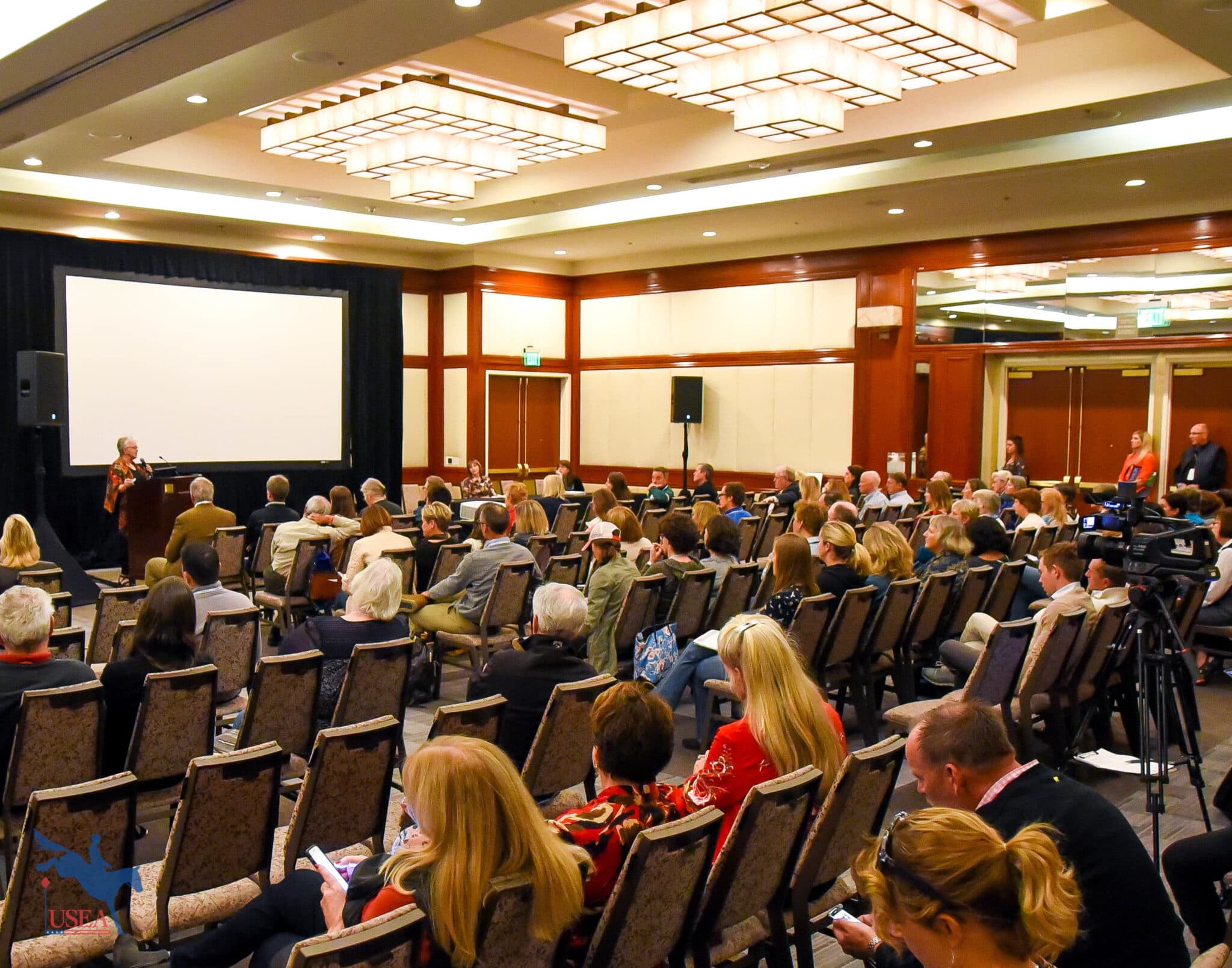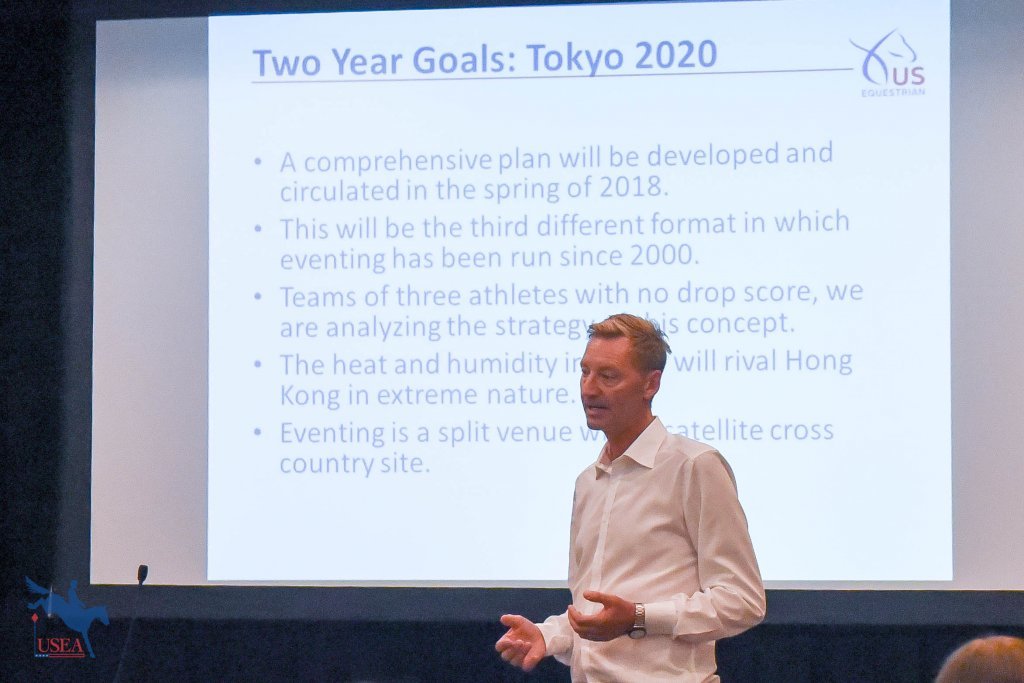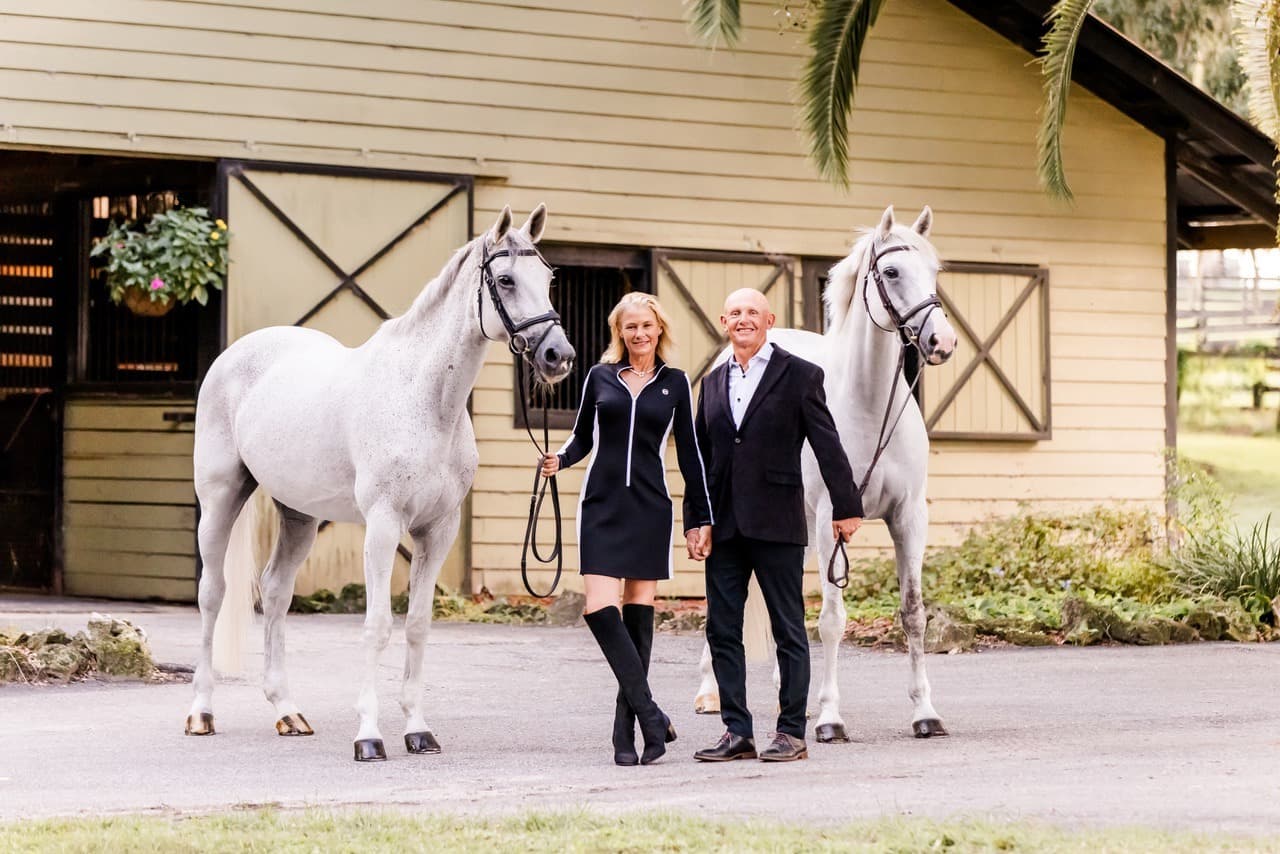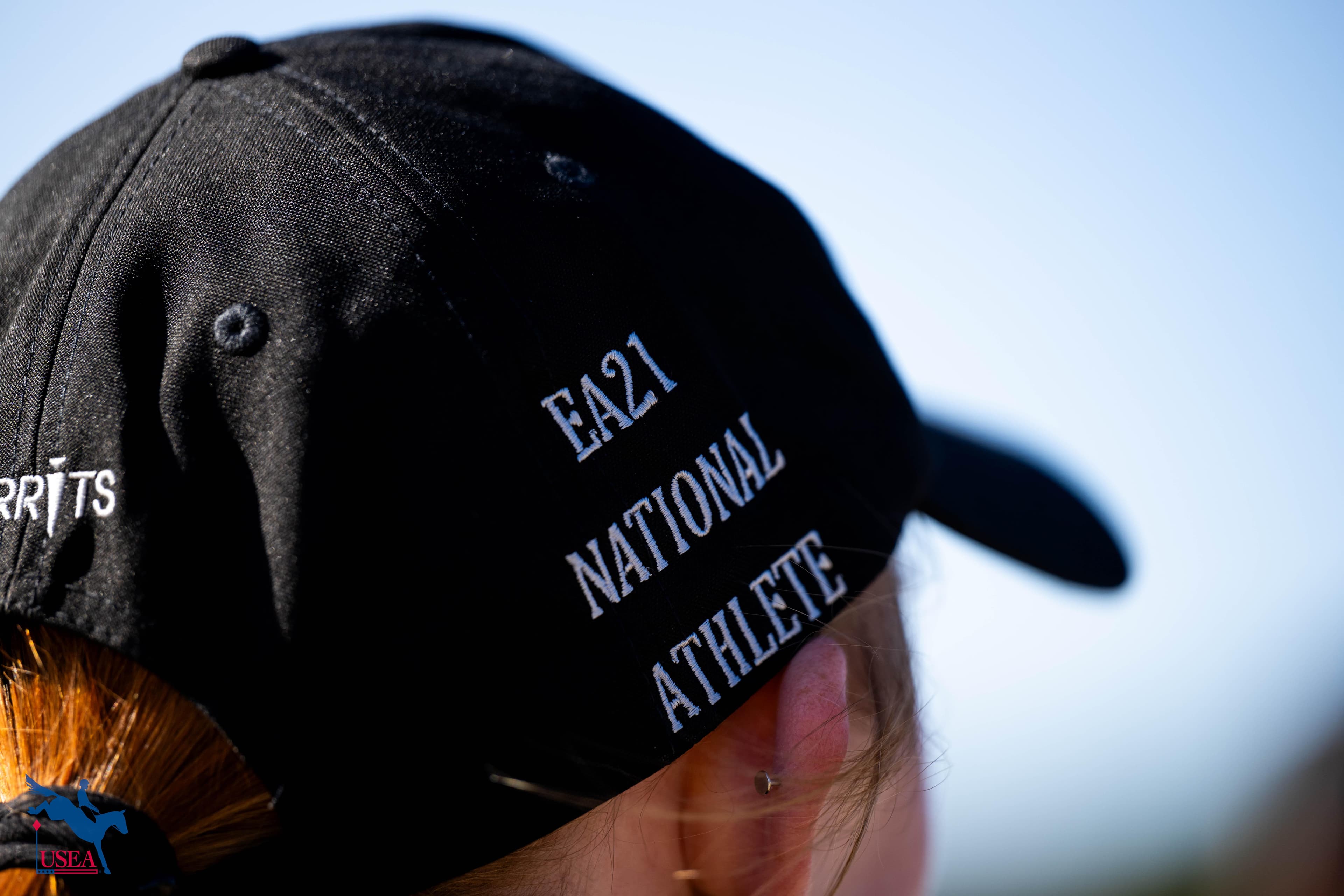A Taste of Saturday at the 2017 USEA Annual Meeting and Convention

The 2017 USEA Annual Meeting and Convention was so jam-packed with interesting seminars and need-to-know open forums that we wanted to stretch it out for one more day! Read on for our highlights from the third day from Long Beach, California. Couldn't make it to Convention this year? Don't worry! We'll be highlighting additional seminars over the coming months thanks to Ride On Video, who provided the livestream and will be archiving all content from this year's Convention for the future enjoyment of our members.
Preparations for the 2018 World Equestrian Games are Well Underway at Tryon International Equestrian Center
Sharon Decker of the Tryon International Equestrian Center (TIEC) began by detailing the work that has so far been done to prepare for the 2018 World Equestrian Games (WEG) and the work that is still to be done. All eight disciplines will take place directly on site at TIEC and Decker outlined where each of those will take place. They are investing heavily in converting the golf course to a cross-country course and thanked Capitan Mark Phillips for the part he has played in making that possible. The hotel and athlete village are both being constructed from a modular product that TIEC is manufacturing. The athlete village will serve as housing for college, high school, and other youth organizations that host programs at TIEC in the future. Test events for all the disciplines will take place in April and May, with The Fork CIC3* serving as the test event for eventing. Officials and veterinarians have been appointed and quarantine for all horses will be at TIEC. Ticket sales have begun and have been sold in all 50 states and 31 countries. NBC will be providing major mainstream news coverage. There is a robust transportation plan in place to accommodate the increased volume of traffic and major road improvements have been planned.
Joanie Morris from the US Equestrian explained that the goal for the team is to put in a strong showing on home soil and qualify for the 2020 Olympics in Tokyo so that developing riders can travel to the Pan American Games. Lumuhlen will be the last U.S. Selection trial in June after which the team of five horses and riders will be selected. Erik Duvander will host a training camp for those selected riders. US Equestrian is working on plans for housing for the team, owerns, and supporters, but this is still in flux pending completion of housing at TIEC. US Equestrian is available as a resource for those with questions.
The session wrapped up with Morris and Decker answering questions from the audience about parking, food, and other logistical concerns.
How Rider Injuries Differ by Gender
Roy Burek of Charles Owen gave a compelling presentation on the differences in traumatic brain injuries (TBI) between males and females. On the whole, women tend to suffer from increased symptoms and recover more slowly compared to men when they are in similar accidents based on data, but the cause of this isn’t known. There are several possible causes, including structural differences, societal differences, and hormonal influences. Burek gave a more detailed explanation of what happens to the brain from a TBI provided several examples of studies that supported the assertion that gender influences cause men and women to react differently. He closed by mentioning potential new treatment options that are being examined.
Young Riders Open Forum
The Young Riders Open Forum began with discussion of the North American Junior/Young Rider Championships (NAJYRC) returning to Rebecca Farm in 2018 and 2019. The group as a whole praised the work the Broussards did to make the young riders feel special and the many advantages as a result of holding NAJYRC in conjunction with The Event at Rebecca Farm. Conversation turned to a larger discussion about how we can maintain the strength of the NAJYRC, particularly at the two-star level, which has struggled to field teams the last several years. Leslie Law advocated strongly for the team experience for two-star riders, saying, "Here [ in the United States] sometimes a rider can get to the Olympic Games and it's their first team experience. I think if we can use the Juniors and Young Riders [Championships] to get [our riders] as much experience as possible, I think it's very important. We've got to try to find a way to make that a good experience for the two-star." Sarah Broussard agreed, saying, "I personally think Young Riders is very important. I was a Young Rider, I had that team experience, and nothing can replace that. Nothing can replace everything about the team experience - working with your freinds, your comrades, and being able to meet people from other Areas . . . I could go on and on about how much Young Riders meant to me."
The group at large then covered topics including logistics for travel and housing at the 2018 NAJYRC, how NAJYRC venue selection takes place, activities for members of the Young Rider program that are riding at the lower levels, including virtual and cross-level team challenges and ways to emulate the team experience for lower-level riders. The meeting closed with comments from Young Riders on what their involvement in the program has meant to them and how it has prepared them to compete at high-profile events like Fair Hill International.
Full House for the Rule Change Open Forum
Andrew Temkin presided over a packed house for the Rule Change Open Forum. He began with an explanation of the rule change process: the Sport Working Group works on the rules and makes recommendations to the Eventing Sport Committee, which in turn makes recommendations to the International Discipline Committee which then go on to the full Board of Governors. New rules or rule changes can be proposed by membership or through their affiliate organization, which in the case of eventing is the USEA. USEF Rules for Eventing are unique in that eventing has its own set of rules which defers to other discipline rules (dressage and jumping) and general rules when the Rules for Eventing do not specifically cover something. Temkin covered the rule changes that took place in 2017, including:
- Bit rules were removed from the Rule For Eventing and put into an Annex, making it easier to make faster changes to match up with the FEI rules.
- Nose nets were previously only allowed with a presidential modification. Now, a signed letter from your veterinarian will allow the use of a nose net.
- The 50-penalty rule has met with controversy in the FEI, so the national federation has elected to keep our rule as is (elimination for not passing through the flags).
Temkin then covered rule changes that have been proposed to go into effect December 1, 2018, for the 2019 competition season:
- Amending the rule on dress to explicitly allow brown helmets.
- Clarification to allow neck straps in dressage. They are not currently explicitly allowed in either dressage or jumping phases.
- Clarification on the rule allowing glue-on shoes.
Temkin also covered several changes to FEI rules:
- When measuring the line of a top spread of a jump, the jump should be measured on the line the horse is intended to jump.
- The rule dictating that you cannot cross your tracks between elements A and B has been amended to explicitly state that you cannot cross your tracks.
- Because of the removal of the 1.5 coefficient in dressage, the MER for dressage has now been changed to 45. The national NQR is 50.
Finally, Temkin reviewed several rule change proposals to the general rules and dressage and jumping discipline rules, including:
- Safe Sport Training that is currently mandated by the Ted Stevens act that is currently compulsory for officials would be extended to trainers.
- Requiring a demonstrated length of membership for individual wishing to put forth rule changes.
- Updating the language referring to special competitions (WEG, Wellington Eventing Showcase, etc.)
- Creating repercussions for making untruthful statements in horse sales or transactions.
- Stronger legislation of helmet usage, including not putting hair up in helmets, not allowing helmets older than four years, and allowing the competition to take a helmet from an athlete after an injury.
- Creating repercussion for those who know of horse cruelty or abuse who do not report it.
- Prohibiting horses and ponies who fall to the ground for no apparent reason from competition for 24 hours.
- Moving the language that governs licensed officials to a guidelines and policy book separate from the rulebook so that it is not subject to the rule change process, which makes making updates difficult.
ICP Young Horse Certifications Gaining Steam in 2018
Sue Hershey, Robin Walker, and Phyllis Dawson presided over the session on ICP Education and Certification for Young Event Horse (YEH) Instructors and Professional Trainers. These new certifications were born of a desire to bridge the gap between the breeders and the production process of the young horses. Hershey explained what went into the process of creating the curriculum for the new YEH Instructor and Professional Trainer certifications, and described the workshops and assessments that are now available. The program has so far been met with enthusiasm by those who have attended both the workshops and the assessment. Certification for the YEH Professional Trainer will be awarded at the Bronze level, with the potential for YEH Professional Trainers to also obtain Silver or Gold based on their experience working with young horses.
- Bronze (Required): a YEH Professional Trainer has provided the ridden development of 6 or more 4-/5-year-olds and has demonstrated at an ICP Assessment the YEH riding, training, horse care skills required to earn a YEH Professional Trainer certificate.
- Silver: a YEH Professional Trainer has achieved Bronze and has aslso completed Preliminary or one-star event competitions on 6 or more horses whom that trainer rode/trained as 4-/5-year-olds.
- Gold: a YEH Professional trainer has achieved Bronze and has also completed Intermediate or two-star event competitions on 6 or more horses whom that trainer rode/trainer as 4-/5-year-olds.
A Year in Review: The Amateur and Adult Rider Open Forum
Each year in the Amateur and Adult Rider Open Forum, the Adult Rider Chairs report back on their year and the successes of the programs. Many of the Areas run similar programs and over the years they have shared ideas and encouraged the success of educating, entertaining and inspiring Adult Riders.
• Highlights from Area X include hosting a Hawley Bennett-Awad clinic, giving out high point awards, sponsoring a happy hour at each Area X event and distributing a questionnaire asking for feedback on the program.
• The Area IX Adult Riders hosted clinics with Peter Gray and Laine Ashker as well as a LandSafe Clinic. They offered for Area IX Adult Rider members the chance to test out fox hunting with the Arapahoe Hunt Club and lastly they encouraged everyone to come to the 2018 American Eventing Championships in Colorado.
• In Area VIII the focus was on education with clinics with Diana Rich and Doug Payne, discounts to the Area VIII camps, educational coupons, and the launch of the Nadeem Noon Educational Scholarship.
• Area VII was chock-full of programs for their Adult Riders with just a few of the highlights being clinics, camps, educational rebates, year-end awards, virtual team challenge and more.
• The crux of the Area VI Adult Rider Program is their two annual camps – one in the North and one in the South. They advertise the camps to all walks of equestrian sport and focus on bringing people into eventing. Area VI also had 40 teams at their Area Adult Team Challenge and had the winning Training-level team at the ATC at AEC.
• Area V hosted two Adult rider clinics – one with Joe Meyer and another with Mary D’Arcy. They also put on an Adult Rider/Young Rider Team Challenge which went over very well.
• Area IV gives ribbons for top Adult Rider point earners, top Adult Rider Volunteer of the Year, hosts a year-long virtual team competition, and held an Adult Rider Camp at Otter Creek.
• In Area III, a reduced-cost clinic with Leslie Law was offered for Adult Riders and the 34 riders representing Area III at the ATC at AEC were decked out with swag for a fun week of competition.
• Area II offers a multitude of programs for the popular Area. They hosted an Adult Rider party at the ATC as well as a barn night at VTO Saddlery. On the educational side they offered a free dressage and horse management clinic as well as a clinic with the ever-popular, Daniel Stewart.
• The Area I Adult Rider Program focuses on developing comradery, safety, education, and fun. They offer a virtual team challenge, socials, “young and the rest of us” team challenge, and classic series and educational voucher program.
Following the Area presentations, the forum hosted several special speakers including Carol Kozlowski, Bunnie Sexton, and Boyd Martin.
An Inside Look into German Success
Peter Thomsen, an integral part of the German team for the past 20+ years spoke with Convention attendees about the success of the Germans in the last decade and how they went from a dry period to being on top of the eventing world.
“In 2000 we changed trainer to Chris Bartle and Chef D’Equipe to Hans Melzer,” explained Thomsen. “They worked together as a team. Chris Bartle was from a foreign country, and he brought the cross-country philosophy to the German team.” While Thomsen shared that Bartle had 30-40 rules for cross-country riding he would only reveal two of them to the audience:
- Rider is responsible for the line and the horse is responsible for the jump.
- Give the horse a long rein with a free neck when jumping into water.
Bartle recently transitioned from the coach of the German team to his native U.K. and the question was asked of Thomsen if he thought the team would be able to maintain their dominance without him. “I think it a disadvantage, but it is normal life in business, sport, whatever,” said Thomsen. “Chris worked 20 years with his cross-country philosophy, and it is now in the blood of our riders and we can pass it on.”
Thomsen also believed that the transition to the new eventing format in 2004 was an advantage for the German team since it put more importance on dressage and show jumping. He also cited the availability of warmbloods in Germany as a plus for those phases.
So how does a rider develop in Germany? The German riding system trains riders from the very beginning to “Ride the horse from the hind end forward, in front of the leg upwards towards your hand.” Even at a young age riders are put on road to success beginning with the “Goldene Scharpe,” a competition for ponies and horses followed by the European Pony Championships, Junior Championships, and Young Rider Championships. If all goes correctly the rider is then selected for the “Perspective Group” which receives funding from the German federation and army. “For riders in the Perspective Group their sole focus is on riding and schooling horses approximately 200 days of education a year,” explained Thomsen. “It is a dual system of studying with riding much like German vocational training in other job areas as well.”\
Thomsen concluded by saying: “In the end you need luck; which you have to work for.”
Erik Duvander Unveils USEF High Performance Plans

In his open meeting of the USEF High Performance Athletes, the new U.S. Performance Director, Erik Duvander, revealed his plans for the next few years. The immediate goal is the 2018 World Equestrian Games in Tryon, North Carolina. Since time is short until the September competition, Duvander will just be focusing on riders on the high performance lists. “We will be developing well-structured individual performance plans that are living documents to ensure continued development and active personal bests,” said Duvander. “These plans need to be realistic and owned by the athletes but supported by the USEF Team. Expectation is that each training listed rider will have their own sustainable coaching and support team of the highest quality that will be in place regardless of their position on or off a training list. The USEF will work closely with the athlete coaches, vets and farriers to provide resources and support as required.”
Duvander continued with thoughts on his program, “Athletes must be willing to buy in to the aims of the program including facilitating effective communication between the athlete’s own support staff and the program/team support staff.”
With the focus on a home-country competition this year less focus will be placed on overseas competitions except for targeted competitions focused on WEG-prep. However, Land Rover, Jacqueline Mars and USEF grants will be available for travel. “Funding is a privilege not a right and funding will only be provided against targets or Key Performance Indicators (KPIs) with athletes’ buy-in to the program,” explained Duvander.
Performance plan for 2019-2022 will be developed and published in the Spring of 2018 as Duvander had to work quickly to put together a plan for WEG 2018.
2018 WEG Plans:
- Qualification (Qualifying period for the USEA runs from Jan 1, 2017 – June 17, 2018)
- Personal coaching plans and preparation agreed on with the performance director and funded accordingly. The majority of horses targeting WEG will be contesting the Kentucky Three-Day Event. A handful will be heading to Badminton or Luhmuhlen or a CCI3*. Utilizing Nations Cups at The Plains and Aachen to practice in a team environment. Bromont is offering a CIC3* on Aug 18-19 which may be utilized.
- Execution: “A top six finish will qualify us for the Olympic Games,” said Duvander. “While we are capable of achieving more, this goal will drive strategic decisions on the field of play.”
- The squad of five and a list of Direct Reserve Horses and reserve combinations will be named following the vet evaluations after the Luhmuhlen CCI4*.
- Training camp details are being finalized.
- A home games has home advantage and disadvantage, this is something we will be working on strategically based on lessons learned in 2010.
“Selection will be fair and transparent,” said Duvander. “The subjective aspect to eventing selection and some of the decisions are made on information that is confidential. Mutual respect between riders, owners, and the organization. I have been a selector myself and it is a really difficult job.”
#USEAConvention | Facebook | Twitter | Instagram | Snapchat: @USeventing
About the USEA Annual Meeting and Convention
The USEA Annual Meeting and Convention takes place each December and brings together a large group of dedicated USEA members and supporters to discuss, learn, and enjoy being surrounded by eventing enthusiasts. The USEA organizes multiple seminars in addition to committee meetings, open forums, and tons of fun! The convention is made possible through the support of sponsors: Adequan, Devoucoux, Nutrena, Charles Owen, SmartPak, Rebecca Farm, Mountain Horse, Merck Animal Health, Standlee Hay, Auburn Laboratories, Eventing Training Online, DG Stackhouse & Ellis Saddles, Point Two, Professional’s Choice, Bit of Britain, Staples Inc., World Equestrian Brands, Gallops Saddlery, RevitaVet, CWD, H.E. Tex Sutton Forwarding Company, and Parker Equine Insurance.
Learn more about the 2017 USEA Annual Meeting and Convention by visiting the Convention page on the USEA website.














